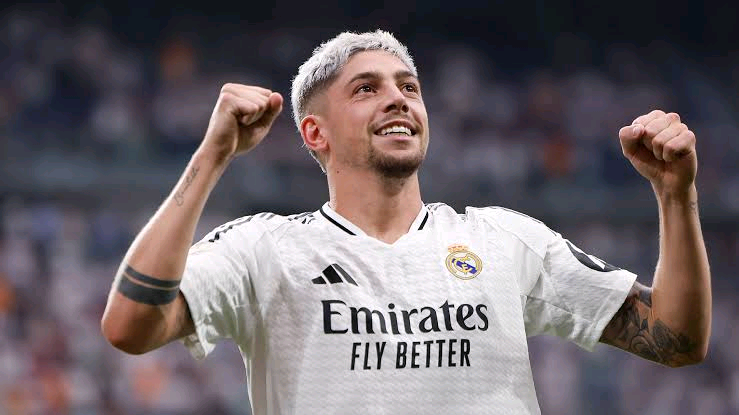Valverde & Asencio: A New Defensive Strategy for Real Madrid Under Ancelotti…
Carlo Ancelotti has always been known for his tactical flexibility, adapting his strategies to the evolving needs of his team. This season, Real Madrid’s head coach has introduced a fresh and innovative approach to his team’s defense, and the new roles of Federico Valverde and Asensio are central to this defensive reshuffle. Both players have traditionally been deployed as attacking midfielders or wingers, but Ancelotti has begun utilizing them in more defensive capacities, prompting a wave of excitement and curiosity among fans and pundits alike.
Ancelotti confirmed the changes in a recent interview, stating that the club “tried something new” in their defensive setup. The move is aimed at giving Real Madrid greater flexibility in both attack and defense. This new approach is an extension of the tactical adaptability that has defined Ancelotti’s managerial career, where he has continually worked to optimize his players’ strengths.

Valverde’s Role as a Defensive Midfielder
Federico Valverde, who has been one of Real Madrid’s most influential players in recent seasons, has found a new role in the team’s midfield. Known for his boundless energy, work rate, and ability to cover vast areas of the pitch, Valverde has long been seen as a box-to-box midfielder. However, Ancelotti has given him more responsibility in defensive transitions.
In this new setup, Valverde is frequently tasked with tracking back to help protect the defense, especially when the team is under pressure. His high pressing, combined with his strong tackling abilities, makes him a valuable asset when the team needs to regain possession. Valverde’s versatility allows him to seamlessly switch between defensive duties and launching counter-attacks. In attack, his runs from midfield have been crucial in exploiting spaces left by opposition defenders.
His presence in deeper areas of the pitch allows Real Madrid to retain a solid defensive structure while maintaining the attacking threat they are known for. This adjustment reflects Ancelotti’s commitment to building a balanced squad, one that can seamlessly transition from defensive to offensive play without sacrificing either aspect.
Asensio’s Adaptation to a Defensive Role
Marco Asensio, like Valverde, is known for his creativity and flair in the final third, usually playing as a winger or attacking midfielder. However, Ancelotti has employed him in more defensive scenarios as part of the team’s tactical evolution. Asensio has been asked to play a deeper role, often in a more central position where his defensive contributions are needed more frequently.
This role requires Asensio to contribute defensively in wide positions, tracking opposition wingers and cutting out crosses. His work rate and intelligence on the ball have allowed him to excel in this new position. Asensio’s adaptation to a defensive role not only strengthens Real Madrid’s defensive options but also provides Ancelotti with more flexibility in attacking transitions. When Real Madrid regains possession, Asensio can quickly shift into an attacking role, using his pace and creativity to initiate counter-attacks.
Tactical Evolution and Squad Versatility
The move to integrate Valverde and Asensio into defensive roles is a tactical evolution that reflects Ancelotti’s willingness to experiment with different systems to get the best out of his players. With these changes, Real Madrid can deploy a fluid formation that allows for greater adaptability depending on the opponent and match situation.
By involving Valverde and Asensio in defensive duties, Ancelotti also ensures that the team maintains its defensive solidity without sacrificing offensive output. The presence of two versatile and dynamic players in these deeper roles means that Real Madrid can press high when required but also sit back and control possession when necessary.
Conclusion
Carlo Ancelotti’s tactical innovations this season demonstrate his ability to adapt to changing circumstances and to make the most of the talent at his disposal. The inclusion of Valverde and Asensio in defensive roles is just one example of his approach to creating a more balanced and flexible team. As Real Madrid continues to evolve, this defensive evolution could prove to be the key to the team’s success in both domestic and European competitions. Fans can expect even more surprises as Ancelotti continues to experiment with his squad, finding new ways to blend attack and defense into a cohesive unit.









